The Origins of Skiing
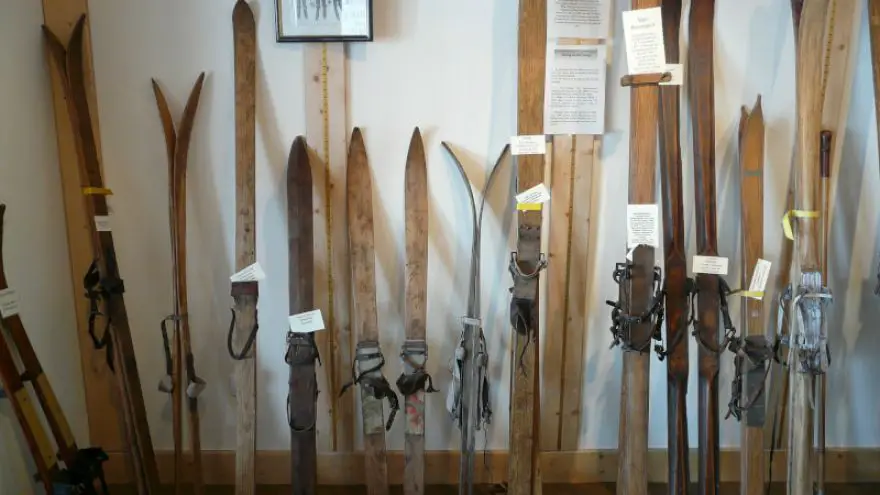 The Origins of Skiing
gearweare.net
The Origins of Skiing
gearweare.net
The history of skiing stretches back not just decades or even centuries, but thousands of years into the past. In Russia and Scandinavia, rock paintings have been found that depict skiing as far back as 3000 BC. Rock carvings that are about 4,000 years old have also been found in Norway, while the oldest skis ever found are actually even more ancient than either of these pictures. They were found in a peat bog near Lake Sindor in Northern Russia, and are dated to have been made around 7000 BC. Many other ski fragments that range in age from 1,000 to 3,500 years old have been found in other bogs throughout Sweden, Norway, and Finland. Skiing was clearly built into the culture of these northern nations. In fact, from 1300 BC onward, a god, Ullr, and goddess, Skade, of skiing were included in the pantheon of Norse Mythology.
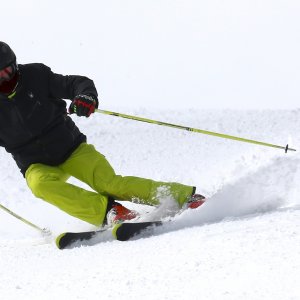 What all countries that developed skiing so early in their history have in common is snow. Skis were used to traverse difficult ground in the winter. They allowed people to continue hunting when deep snow and ice would have otherwise made it impossible and to cross tundra at much greater speed. As opposed to the modern perception of skiing as a sport that involves going downhill at great speeds, skiing was originally conceived as a mode of transportation that involved moving over predominately flat ground. They were widely adopted throughout Europe and Asia, however, snowshoes were more popular in the Americas. It is thought that this may be a byproduct of the type of snow the different continents primarily receive.
What all countries that developed skiing so early in their history have in common is snow. Skis were used to traverse difficult ground in the winter. They allowed people to continue hunting when deep snow and ice would have otherwise made it impossible and to cross tundra at much greater speed. As opposed to the modern perception of skiing as a sport that involves going downhill at great speeds, skiing was originally conceived as a mode of transportation that involved moving over predominately flat ground. They were widely adopted throughout Europe and Asia, however, snowshoes were more popular in the Americas. It is thought that this may be a byproduct of the type of snow the different continents primarily receive.
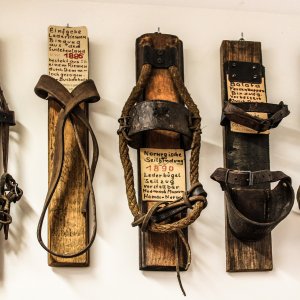 Skiing has also been utilized to increase chances of survival during a war. One of the first stories of how skiing has been utilized by the military tell of how two Norwegians, Thornstein Skevla and Skjervald Skrukka, rescued the king’s son and heir to the throne during a civil war that occurred in 1206 AD. The men carried the 2-year-old prince across 55 miles of terrain through the Dovre Mountains wearing skis. The tradition of military skiing in continued in Norway from the 15th to the 17th century. Other countries in the region, including Finland, Russia, Poland, and Sweden, also incorporated skiing into their military during this time. Beginning in the 1760s, the Norwegian army also began organizing competitions that compared soldiers’ abilities when skiing downhill, through trees, over snowfields, and while shooting at a target.
Skiing has also been utilized to increase chances of survival during a war. One of the first stories of how skiing has been utilized by the military tell of how two Norwegians, Thornstein Skevla and Skjervald Skrukka, rescued the king’s son and heir to the throne during a civil war that occurred in 1206 AD. The men carried the 2-year-old prince across 55 miles of terrain through the Dovre Mountains wearing skis. The tradition of military skiing in continued in Norway from the 15th to the 17th century. Other countries in the region, including Finland, Russia, Poland, and Sweden, also incorporated skiing into their military during this time. Beginning in the 1760s, the Norwegian army also began organizing competitions that compared soldiers’ abilities when skiing downhill, through trees, over snowfields, and while shooting at a target.
The incorporation of skiing into different militaries has helped in the popularization of the sport. For example, the first ski manual was written by a captain in the Norwegian Army, Jens Emmahusen, in 1733. Furthermore, the utilization of ski battalions during World War I and World War II worked to popularize the sport since many veterans became drivers of the ski industry once they had returned to civilian life. After WWII, veterans of the 10th Mountain Division like Montgomery Atwater did much to progress skiing as a sport in the United States. He started the first avalanche research center at Alta in Utah, which provided important knowledge on how snowpack works and allowed skiers to venture further into the mountains. Finally, the sport of biathlon, which involves cross country skiing and target shooting, has clear ties to the utilization of skiing by military forces.
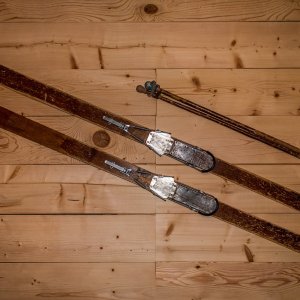 Skiing began to make its transition from a purely practical mode of transportation to a recreational activity sometime during the 18th century, during which time turning styles began to evolve in a way that allowed a skier to remain in control while moving at higher speeds. The cambered ski was invented at the turn of the century. These allowed skiers to remain more centered in their skis, so skis could be thinner and lighter. This gave them more flex and allowed them to float more easily over deep now while also allowing for better shock absorption and quick turning.
Skiing began to make its transition from a purely practical mode of transportation to a recreational activity sometime during the 18th century, during which time turning styles began to evolve in a way that allowed a skier to remain in control while moving at higher speeds. The cambered ski was invented at the turn of the century. These allowed skiers to remain more centered in their skis, so skis could be thinner and lighter. This gave them more flex and allowed them to float more easily over deep now while also allowing for better shock absorption and quick turning.
As the 1800s progressed, ski sporting events outside of the military setting where they had begun to become more common. The first cross-country, or Nordic, ski race occurred in 1843 in Norway. Meanwhile, skiing was also taking hold in the United States, where the first downhill ski race occurred in Onion Valley, CA in 1861. The first national-level ski competition was, unsurprising, in Oslo, Norway. It was during this competition that Sondre Norheim, nicknamed the “Grandfather of Skiing”, won with the pioneering of the telemark and Christiana turns. Shortly after, in the 1880s, the popularity of Alpine skiing began to outgrow that of cross-country skiing. This shift meant that big mountains were suddenly where people wanted to go skiing, which suddenly placed the Alps at the center of ski culture.
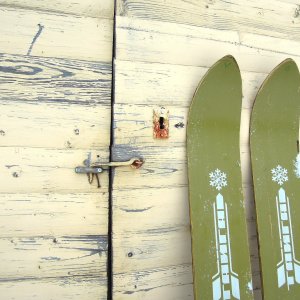 Right around the same time that alpine skiing was taking off in popularity, hickory became the wood of choice for creating skis. Tougher than other woods, it could be used to create thinner skis with better flex that were also resistant to damage from rocks. Then, as the 19th century moved into the 20th, a progression of inventions in the science of skis brought rapid change. These inventions included: laminated skis, the toe iron, the steel edge, heel bindings, and skis that release.
Right around the same time that alpine skiing was taking off in popularity, hickory became the wood of choice for creating skis. Tougher than other woods, it could be used to create thinner skis with better flex that were also resistant to damage from rocks. Then, as the 19th century moved into the 20th, a progression of inventions in the science of skis brought rapid change. These inventions included: laminated skis, the toe iron, the steel edge, heel bindings, and skis that release.
The first Winter Olympics were held in 1924, in the still world-famous ski town of Chamonix, France. This introduced skiing to the world stage. After that, the industry began to grow even more quickly. In 1934, the tow rope was built at a small farm in the northeastern US. Only two years later, Sun Valley Ski Resort in Idaho installed the first chairlift in the world. Meanwhile, ski schools began to pop up where skiing was popular. Hannes Schneider started the first ski school in Austria in 1907, and others begin to follow his lead at resorts around the world.
From the first part of the 20th century until now, skiing has continued to evolve in ways that the inventors of this sport could never have imagined. New disciplines like freestyle and big mountain skiing have been developed and the offshoot sport of snowboarding was born. More people than ever ski these days, and the sport is likely to only become more popular in the future.











